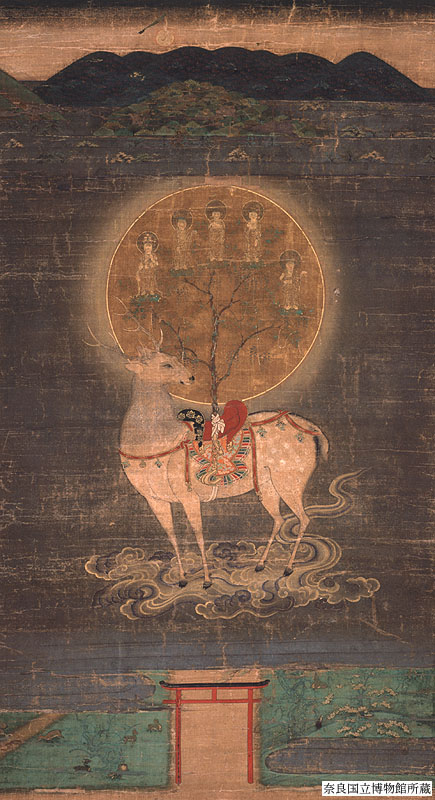Kasuga Deer Mandala
 Kasuga Deer Mandala
Kasuga Deer Mandala
Kamakura Period: 14th century
Nara National Museum
In this painting scroll, a sakaki (sacred
tree) is placed on the back of the divine white deer. The four
deities of Kasuga Shrine and the deity of Kasuga Wakamiya (New)
Shrine are visualized as Buddhas standing on the boughs of the
sacred tree. Twining around the boughs is fuji (wisteria),
which is the symbolic flower of the shrine and the Fujiwara clan.
In the lower part of the image, scenes around Kasuga Shrine unfold,
in which deer frolic in the meadow. In the upper area, Mt.
Mikasa is depicted with a conical shape among the Kasuga hills.
In some varieties of Shinto worship in Japan, conical hills are
considered sacred as deities’ seats. The most typical example
is Mt. Miwa, located in the southeastern
part of the Nara Basin, which is considered an object of worship
of Ōmiwa (Miwa) Shrine. In the above painting, landscape
features in Nara were combined to represent the cosmology of the
faith.
By Noboru Ogata, Emeritus, Kyoto University
Reproduced by courtesy of the
Nara National Museum. Unauthorized reproduction of the image
is prohibited.

Back

